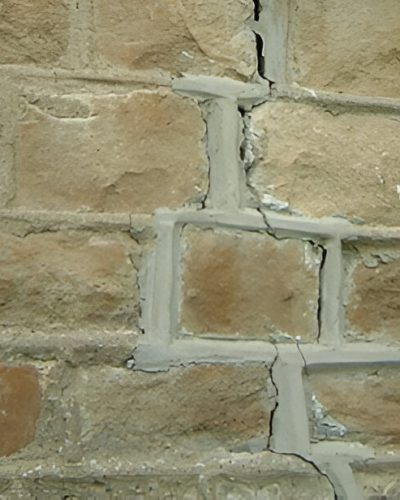
Eco-Friendly Disposal and Sustainable Gardening with the MODEL 150 CDE Tomcat Wood Chipper
July 30, 2025
Handling Storm Damage in Urban Areas: Expert Tree Service Guide
August 13, 2025Photo: Crack in exterior wall, generic condition, at The School of Restauration Arts at Willowbank, Queenston, Ontario, Canada by Achim Hering, CC BY 3.0, via Wikimedia Commons
When trees grow too close to your home, they may quietly compromise your foundation. Some roots draw moisture from the soil, causing shrinkage and shifts. Others exert pressure on footings, cracking slabs or dislodging paving. These issues build slowly, often going unnoticed until the damage is expensive. Below are tree removal tips, that go beyond the usual advice and focus on long-term stability.
Don’t Just Measure Distance—Check Soil Type
Many homeowners assume that three metres is a safe planting distance. But soil type changes that. Clay expands and contracts with moisture changes, amplifying root impact. Sandy soil drains faster but offers less support during removal. Before deciding on removal, identify your soil type first.
Remove in Winter, Not Summer
Summer removal may seem convenient, but it’s riskier. In hot months, drying roots can cause sudden ground movement. By removing trees during winter dormancy, you give the soil time to adjust gradually. Moisture levels remain more stable too.
Use Root Mapping Before You Cut
Don’t guess where roots are growing. Hire a contractor who uses ground-penetrating radar or air excavation. These methods reveal how far roots have spread without damaging them. You’ll avoid cutting into shared utility zones or destabilising nearby structures.
Let the Ground Settle Before Replanting
After a large tree is removed, wait six to twelve months before planting anything substantial in the same spot. This gives the soil time to rehydrate and settle. Otherwise, your new plantings may shift or sink with the ground.
Choose Replacement Plants with Shallow, Slow Roots
When replanting near a foundation, opt for shrubs or trees like dogwood or dwarf olive. These species grow slowly and have non-invasive roots. That means less pressure on your foundation in the long term, and fewer moisture fluctuations below ground.
Tree roots don’t just crack concrete — they quietly shift the balance beneath your home. With the right tree removal tips, you’re not just clearing space. You’re protecting the ground you live on, one smart decision at a time.


